
Wonderland: How Play Made the Modern World
by
Steven Johnson
Published 15 Nov 2016
(When the robots eventually write the history of their species, these animated tableaux will serve nicely as a creation myth.) By the early 1700s, the focus shifted from re-creating the bustle of an animated village or garden to building increasingly lifelike simulations of individual organisms. In the first half of the eighteenth century, the French inventor Jacques de Vaucanson famously constructed an automaton called the Digesting Duck that consumed grain, flapped its wings, and—the pièce de résistance—actually defecated after eating. A few decades later, in 1758, a Swiss horologist named Pierre Jaquet-Droz traveled to Madrid to present an array of wonders to King Ferdinand, most of them pendulum or water clocks that featured animated storks, flute-playing shepherds, and songbirds—the mechanical descendants of al-Jazari’s ingenious devices.
…
Hidden inside the pedestal, air pumps and crankshafts controlled the pressure of the air released through the shepherd’s mouth, along with the movement of the automaton’s fingers. A pinned cylinder controlled the volume and sequence of the notes played; a rotating collection of cylinders allowed the shepherd to play twelve distinct songs. The flute player was the creation of Jacques de Vaucanson, the French automaton designer now most famous for his “digesting duck.” (The duck would appear at the Hôtel de Longueville on a pedestal next to the flute player the following year.) Vaucanson was the first of the automaton designers to focus on creating truly lifelike behavior in his machines, with movements that were predicated on careful anatomical study.
…
(And, in the case of the flute player, to accompany those sound waves with physical movements that mimicked the behavior of human musicians.) Think of all the ways that the world has been transformed by software, by machines whose behavior can be sculpted and reimagined by new instruction sets. For almost a thousand years, we had that meta-tool in our collective toolbox, and we did nothing with it other than play music. Jacques de Vaucanson Vaucanson’s flute player, however, would lead us out of that functional cul-de-sac. Designing the programmable cylinders that brought the musical shepherd to life suggested another application to Vaucanson, one that had far more commercial promise than showcasing androids in hotel lobbies.
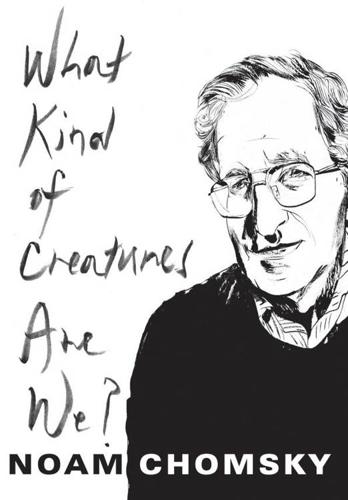
What Kind of Creatures Are We? (Columbia Themes in Philosophy)
by
Noam Chomsky
Published 7 Dec 2015
The theoretical counterpart was the materialist conception of the world that animated the seventeenth-century scientific revolution, the conception of the world as a machine, simply a far grander version of the automata that stimulated the imagination of thinkers of the time much in the way programmed computers do today: the remarkable clocks, the artifacts constructed by master artisans like Jacques de Vaucanson that imitated animal behavior and internal functions like digestion, the hydraulically activated machines that played instruments and pronounced words when triggered by visitors walking through the royal gardens. The mechanical philosophy aimed to dispense with forms flitting through the air, sympathies and antipathies, and other occult ideas, and to keep to what is firmly grounded in commonsense understanding and intelligible to it.

Wired for War: The Robotics Revolution and Conflict in the 21st Century
by
P. W. Singer
Published 1 Jan 2010
—SIR WINSTON CHURCHILL “Perhaps the most wonderful piece of mechanism ever made” is how the famous Scottish engineer Sir David Brewster would describe it some one hundred years after it was invented. By contrast, the great poet Johann Wolfgang von Goethe called it “most deplorable ... like a skeleton [with] digestive problems.” The two men were talking about Vaucanson’s duck, the mechanical wonder of its age, or, as present-day scientists call it, “the Defecating Duck.” Jacques de Vaucanson was born in Grenoble, France, in 1709. At the age of twenty-six, he moved to Paris, then the center of culture and science during the Age of Enlightenment. Inspired by Isaac Newton’s idea of the universe as a great clock that had been set in motion by the Creator, the Deist philosophers of the time saw the world as guided by mechanical forces.
…
Congress ordered the Pentagon to show a “preference for joint unmanned systems in acquisition programs for new systems, including a requirement under any such program for the development of a manned system for a certification that an unmanned system is incapable of meeting program requirements.” If the U.S. military was going to buy a new weapon, it would now have to justify why it was not a robotic one. In a certain way, then, the history of robots had come full circle. Jacques de Vaucanson had impressed the most powerful leaders of his time with a futuristic vision of a world filled with artificial creations. Some 250 years later, President George Bush, the first president of the twenty-first century, saw the world turning out to be much the same way, just without the duck. “Now it is clear the military does not have enough unmanned vehicles,” he said.
…
unit cohesion and war crimes and war porn and warrior redefined by see also military robotics; robotics; robots; war, warfare Unrestricted Warfare (Qiao and Wang) Urbanscape program USV (unmanned surface vessel) U-2 spy plane UUV (unmanned underwater vehicle) V-1 rocket V-2 missile V-3 (supercannon) van Creveld, Martin Vanguard (robot) Varian, Paul Vaucanson, Jacques de Vaucanson’s duck VB-1 Azons (radio-controlled bomb) Vego, Milan Velvet Underground Verdun, Battle of Verhoff, Donald VeriChip company Verne, Jules Verruggio, Gianmarco Very-high-altitude, Ultra-endurance, Loitering Theater Unmanned Reconnaissance Element (VULTURE) Vick, Michael Vietnam Vietnam War My Lai atrocity in smart bombs in Tonkin Gulf Incident and UAVs in Vincennes, U.S.S.

The Internet Is Not What You Think It Is: A History, a Philosophy, a Warning
by
Justin E. H. Smith
Published 22 Mar 2022
The automation of silk production, a process in which Jacquard’s loom is a relatively late development, involves a long history of inventors trying to understand and master what today we would call the “interface” between living and artificial systems. One of Jacquard’s predecessors in the development of loom technology, Jacques de Vaucanson, who himself experimented with punched cards as early as 1725 but did not employ them with any significant degree of automation, is much better known for his so-called canard digérateur or “digesting duck,” which we have already mentioned in the preceding chapter: a mechanical waterfowl so lifelike, its inventor promised, that it could not only walk around and flap its wings, but could even consume food and defecate its waste products.7 It is not surprising that one and the same man should have been occupied with these two projects, for both machines, the defecating duck and the silk-weaving loom, are doing the same sort of work, though in opposite directions: the duck starts with artifice and seeks to push it across the border that separates it from the natural; the loom starts with a natural product, the silk of certain species of moth larva, and turns it into the artifice of a woven piece of fabric.
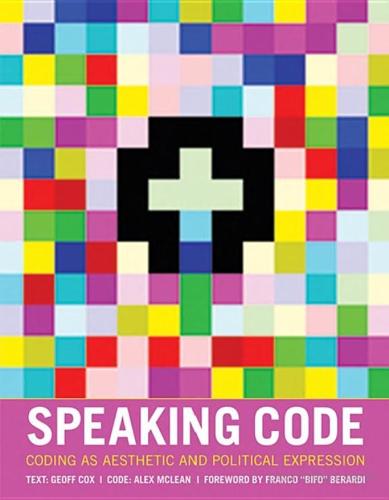
Speaking Code: Coding as Aesthetic and Political Expression
by
Geoff Cox
and
Alex McLean
Published 9 Nov 2012
He is explaining the gap that separates the negated system’s “real” death from its “symbolic” death. 25. Virno, Multitude, 63. 26. Ibid., 50. 27. Butler, Excitable Speech, 15. 28. Virno, Multitude, 50. 29. Žižek, The Ticklish Subject, 18. 30. Ibid., 60. Further invoked here is the input-output automaton Canard Digérateur, or Digesting Duck, created by Jacques de Vaucanson in 1739, which appeared to eat grain, metabolize, and defecate. A replica of Vaucanson’s mechanical duck, created by Frédéric Vidoni, can be seen at the Musée des Automates, Grenoble, France. 31. Virno, Multitude, 190. 32. The slogan “Information wants to be free” is attributed to Stewart Brand, who argued that technology could be liberating rather than oppressing.
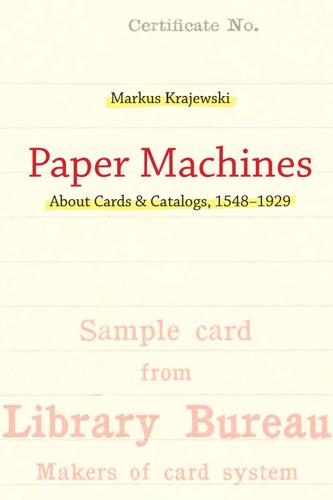
Paper Machines: About Cards & Catalogs, 1548-1929
by
Markus Krajewski
and
Peter Krapp
Published 18 Aug 2011
Remington & Sons Typewriter Company, spun off by gun producer Eliphalet Remington II in 1886, acquires both Library Bureau and Globe Wernicke, merging them the following year with Rand Kardex to form Remington Rand Inc.78 A department called Remington Kardex Bureau spurs the decisive advancement of the index card to an automated storage device principle whose origins refer once more to Europe, that is, to the eighteenth century and Jacques de Vaucanson as well as Joseph Marie Jacquard’s punch cards.79 After 1958, five electric-pneumatically linked Remington Rand typewriters print the paper slips of the last analog catalog of the Austrian National Library, five copies synchronized by compressed air. However, they prove inferior to the more robust and soon widely used electric typewriters of the International Business Machines Corporation, and as a result are disposed of.80 The intertwined genealogy of card index makers and typewriter manufacturers, leading to the production of the universal discrete machine, remains an American history of mergers and acquisitions.

Power and Progress: Our Thousand-Year Struggle Over Technology and Prosperity
by
Daron Acemoglu
and
Simon Johnson
Published 15 May 2023
Despite this reservation, the modern field of AI followed in Turing’s footsteps and focused on artificial intelligence, defined as machines acting autonomously, reaching human parity, and subsequently outperforming humans. Boom and Mostly Bust Fascination with machine intelligence often leads to exaggeration. The eighteenth-century French innovator Jacques de Vaucanson would have had a well-deserved place in the history of technology for his many innovations, including the design of the first automatic loom and an all-metal-cutting slide lathe, which was pathbreaking for the early machine-tool industry. Yet today he is remembered as a fraudster for his “digesting duck,” which flapped its wings, ate, drank, and defecated.
…
A worker watches, wearing gloves. 23. A reconstruction of the Bombe, designed by Alan Turing to speed up the decryption of German signals during World War II. 24. MIT math professor Norbert Wiener brilliantly warned in 1949 about a new “industrial revolution of unmitigated cruelty.” 25. An imaginative drawing of Jacques de Vaucanson’s digesting duck. 26. Human-complementary technology: Douglas Engelbart’s mouse to control a computer, introduced at the “Mother of All Demos” in 1968. 27. So-so automation: customers trying to do the work, and sometimes failing, at self-checkout kiosks. 28. Facebook deciding what is and what is not fit for people to see. 29.

To Be a Machine: Adventures Among Cyborgs, Utopians, Hackers, and the Futurists Solving the Modest Problem of Death
by
Mark O'Connell
Published 28 Feb 2017
In it, La Mettrie takes a radical step beyond Descartes by jettisoning entirely the notion of the soul, and portraying the human creature as no different in kind to the animals Descartes had presented to the world as mere machines. For him, the human body was “a self-winding machine, a living representation of perpetual motion.” La Mettrie had been influenced by seeing the exhibited automata of the inventor Jacques de Vaucanson, whose most famous work was a mechanical duck that, when fed grain, appeared to have the ability of metabolizing and then defecating it. (“Without the shitting duck of Vaucanson,” Voltaire sharply observed, “we would have nothing to remind us of the glory of France.”) Vaucanson also made human automata, although these were charged not with the production of feces, but with more genteel labors like the playing of flutes and the banging of tambourines.
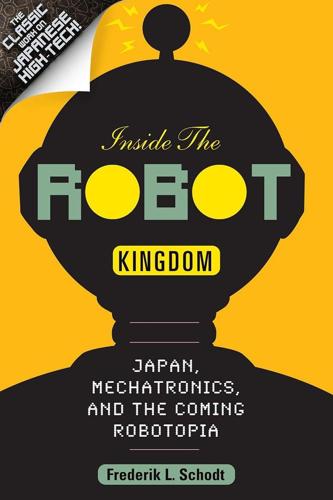
Inside the Robot Kingdom: Japan, Mechatronics and the Coming Robotopia
by
Frederik L. Schodt
Published 31 Mar 1988
., described how pneumatics, counterweights, and cams could be used to construct mechanical singing birds, drinking animals, and even a type of coin vending machine. In the eighteenth century, European automata reached their zenith with the application of complex mechanisms from clock technology. Jacques de Vaucanson fascinated the entire continent with a mechanical duck that quacked, ate, and defecated. The androids of Pierre Jaquet-Droz and sons could draw, write messages, and play musical instruments and were so uncannily lifelike they are said by some to have inspired Mary Shelley to write her novel Frankenstein.

Heart of the Machine: Our Future in a World of Artificial Emotional Intelligence
by
Richard Yonck
Published 7 Mar 2017
Berman Center/Drugstore.com survey. Unpublished, 2004; D. Herbenick, M. Reece, S. Sanders, B. Dodge, A. Ghassemi, J. D. Fortenberry. “Prevalence and characteristics of vibrator use by women in the United States: results from a nationally representative study.” Journal of Sexual Medicine. July 2009. 6(7): 1857–1866. 8. Jacques de Vaucanson was an eighteenth-century French inventor famous for his automata that simulated biological functions. His masterpiece is considered to have been the Digesting Duck. Made up of hundreds of pieces, the mechanical duck could flap its wings, drink water, eat and digest grain, pass it though its stomach and intestines, then finally defecate it.
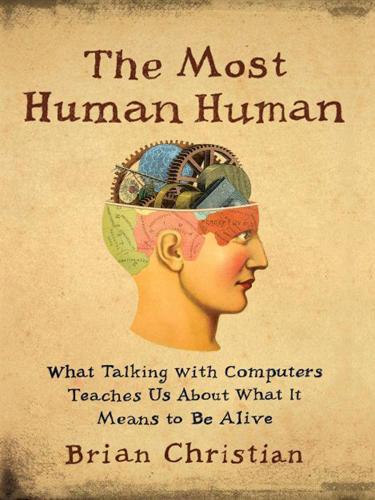
The Most Human Human: What Talking With Computers Teaches Us About What It Means to Be Alive
by
Brian Christian
Published 1 Mar 2011
(Which latter problem, as Sacks suggests, is of the “right hemisphere” variety.) For some time in eighteenth-century Europe, there was a sweeping fad of automatons: contraptions made to look and act as much like real people or animals as possible. The most famous and celebrated of these was the “Canard Digérateur”—the “Digesting Duck”—created by Jacques de Vaucanson in 1739. The duck provoked such a sensation that Voltaire himself wrote of it, albeit with tongue in cheek: “Sans … le canard de Vaucanson vous n’auriez rien qui fit ressouvenir de la gloire de la France,” sometimes humorously translated as “Without the shitting duck we’d have nothing to remind us of the glory of France.”
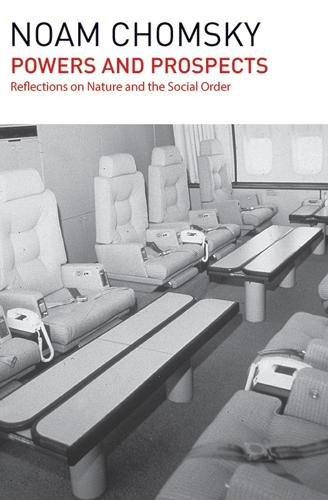
Powers and Prospects
by
Noam Chomsky
Published 16 Sep 2015
As I mentioned earlier, the first cognitive revolution was stimulated by the achievements of automata, much as today, and complex devices were constructed to simulate real objects and their functioning: the digestion of a duck, a flying bird, and so on. But the purpose was not to determine whether machines can digest or fly. Jacques de Vaucanson, the great artificer of the period, was concerned to understand the animate systems he was modelling; he constructed mechanical devices in order to formulate and validate theories of his animate models, not to satisfy some performance criterion. His clockwork duck, for example, was intended to be a model of the actual digestion of a duck, not a facsimile that might fool his audience.
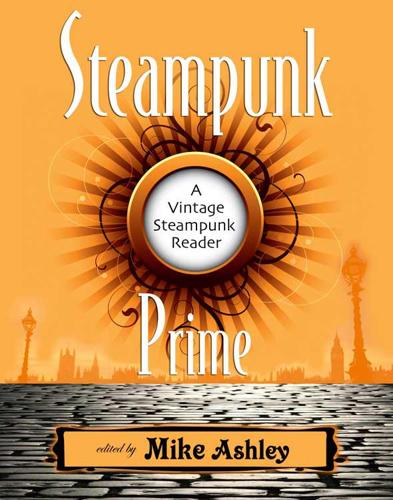
Steampunk Prime: A Vintage Steampunk Reader
by
Mike Ashley
and
Paul Di Filippo
Published 1 Jul 2010
It walked around the island three times each day making itself red hot and embracing any strangers it encountered. Mechanical toys, usually of clockwork, were made throughout the Middle Ages though the first genuine life-like bio-mechanical toy was that of a flute player made by the French inventor Jacques de Vaucanson in 1737. These toys became very popular and were also represented in fiction, one of the earliest being the Talking Turk in “Automata” by E. T. A. Hoffmann, published in 1814. It was the idea of creating man that really launched science fiction with the creature in Mary Shelley’s Frankenstein (1818), and it was the “steam man” featured in the popular dime-novel adventures, starting with The Steam Man of the Prairies by Edward F.

The Big Nine: How the Tech Titans and Their Thinking Machines Could Warp Humanity
by
Amy Webb
Published 5 Mar 2019
And he hypothesized that language could be reduced to atomic concepts of math and science as part of a universal language translator.11 Do Mind and Machine Simply Follow an Algorithm? If Leibniz was correct—that humans were machines with souls and would someday invent soulless machines capable of untold, sophisticated thought—then there could be a binary class of machines on earth: us and them. But the debate had only started. In 1738, Jacques de Vaucanson, an artist and inventor, constructed a series of automata for the French Academy of Science that included a complex and lifelike duck. It not only imitated the motions of a live duck, flapping its wings and eating grain, but it could also mimic digestion. This offered the philosophers food for thought: If it looked like a duck, and quacked like a duck, was it really a duck?

New Horizons in the Study of Language and Mind
by
Noam Chomsky
Published 4 Dec 2003
Focusing on language use, Descartes and his followers, notably Géraud de Cordemoy, outlined experimental tests for “other minds,” holding that if some object passes the hardest experiments I can devise to test whether it expresses and interprets new thoughts as I do, it would be “unreasonable” to doubt that it has a mind like mine. This is ordinary science, on a par with a litmus test for acidity. The project of machine simulation was actively pursued, but understood as a way to find out something about the world. The great artificer Jacques de Vaucanson did not seek to fool his audience into believing that his mechanical duck was digesting food, but rather to learn something about living things by construction of models, as is standard in the sciences. Contemporary debate contrasts rather unfavorably with the tradition, it would seem ( Jonathan Marshall 1989; see also Chomsky 1993a; for further comment and for more extensive discussion, see Chomsky 1966).

Rage Inside the Machine: The Prejudice of Algorithms, and How to Stop the Internet Making Bigots of Us All
by
Robert Elliott Smith
Published 26 Jun 2019
In fact, the guild was so strong that it influenced the denial of Lee’s second patent application by James I, which prompted Lee to leave England for France, where he ultimately died in distress at his failed efforts. It wasn’t until the eighteenth century that Lee’s idea of a mechanical knitting machine was revived in France, when in 1741 the talented inventor Jacques de Vaucanson was given the task of reforming the silk weaving industry, which was falling behind competitors in England and Scotland. The appointment must have seen as surprising to some, as up until that time Vaucanson was known for making automata. These mechanical simulations of animals and people had existed since ancient times, but up until Vaucanson’s innovations they were largely just toys, often made from precious metals and used as decorative amusements for the very wealthy.
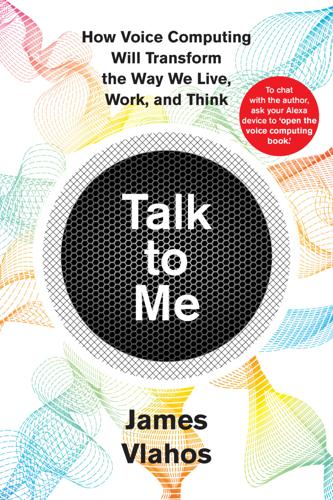
Talk to Me: How Voice Computing Will Transform the Way We Live, Work, and Think
by
James Vlahos
Published 1 Mar 2019
So he wrote a program in the computer class that could automatically solve the cube. Cheyer, however, didn’t yet aspire to be a programmer when he grew up. His dream was to become a magician. He was entranced by illusions in which elaborately engineered mechanical objects came to life. He admired historic masters like the eighteenth-century French inventor Jacques de Vaucanson, whose creations included a duck that could flap its wings, eat, and defecate, and a flute-playing shepherd complete with air-blowing lungs, moveable lips, and fingers covered with synthetic skin. “He could have gone ahead and given his machine a soul,” remarked one awed person who saw the flutist.

A World Without Work: Technology, Automation, and How We Should Respond
by
Daniel Susskind
Published 14 Jan 2020
In the fifteenth century, Leonardo Da Vinci sketched out an autonomous cart and an armor-clad humanoid robot; he also designed a mechanical lion for the king of France, which, when whipped three times by his majesty, would open its chest to reveal the emblem of the monarchy.5 In the eighteenth century, a Frenchman called Jacques de Vaucanson became famous for his machines: one that could play the flute, another that could clatter tambourines in time, and—his most celebrated—a duck that could eat, drink, flap its wings, and defecate. Disappointingly, the so-called canard digérateur, or “digesting duck,” was not actually true to its name; a hidden compartment simply released a convincing alternative to the real thing (bread crumbs, dyed green).6 Swindles like this were amusingly frequent.

In Our Own Image: Savior or Destroyer? The History and Future of Artificial Intelligence
by
George Zarkadakis
Published 7 Mar 2016
The second idea comes from the study of logic, and the curious discovery that logic and mathematics are twins. Let’s look at these two ideas and how they became one. We saw how automata, imported from Byzantium and the Caliphate, became popular in Western Europe during the Renaissance. By the late 1700s the French inventor Jacques de Vaucanson (1709–1782) had designed and built the first automaton purportedly capable of digestion, the ‘digesting duck’: one could feed the mechanical duck with kernels of grain and the machine seemed to metabolise and discharge them through defecation. Many other inventors and engineers fashioned entertaining automata.

Machines of Loving Grace: The Quest for Common Ground Between Humans and Robots
by
John Markoff
Published 24 Aug 2015
He had read books about the great magicians and thought of them as inventors and tinkerers who tricked others by using technology. Before he was ten he was saving his money to buy books and tricks from the local magic store. Later, he realized that his interest in artificial intelligence was rooted in his love of magic. His favorite eighteenth-century magicians and clockmakers led by Jacques de Vaucanson had built early automata: chess-playing and speaking machines and other mechanical humanoid robots that attempted to illuminate the inner workings of what he, like Gruber, would come to see as the most magical device of all—the human brain.3 Although Cheyer knew nothing of Engelbart’s legendary NLS, in 1987 he built his own system called HyperDoc while working as an artificial intelligence researcher with Bull, the aerospace firm, in France.
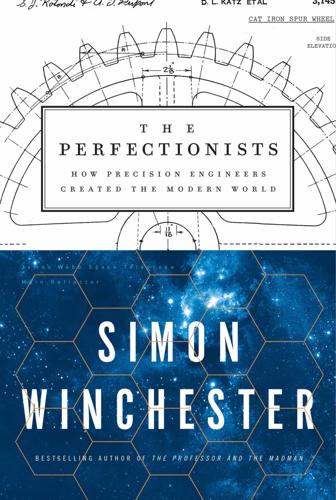
The Perfectionists: How Precision Engineers Created the Modern World
by
Simon Winchester
Published 7 May 2018
Andrey Nartov, the Russian scientist who had the eighteenth-century title of personal craftsman to Tsar Peter the Great, was revered as the greatest teacher of lathe operation in Europe (and taught the methods to the then-king of Prussia) and is said to have made a working slide rest (and taken it to London to show it off) as early as 1718. And just in case the story from St. Petersburg has any doubters, a Frenchman named Jacques de Vaucanson quite provably made one in 1745. Chris Evans, a professor in North Carolina who has written extensively about the early years of precision engineering, notes the competing claims, and cautions against the “heroic inventor” treatment of the story. Far better to acknowledge, he says, that precision is a child of many parents, that its advances invariably overlap, that there are a great many indeterminate boundaries between the various disciplines to which the word precision can be attached, and that it was, in its early days, a phenomenon that evolved steadily over three centuries of ever-lessening bewilderment.
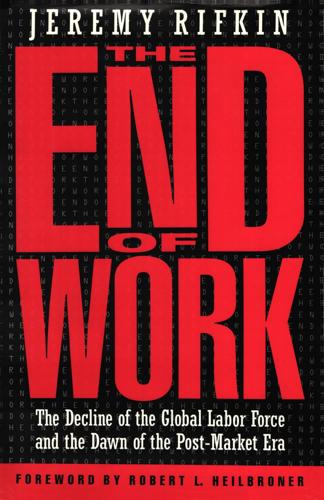
The End of Work
by
Jeremy Rifkin
Published 28 Dec 1994
Engineers built little mechanical boys who wrote Crossing into the High-Tech Frontier 63 out poems and prose, petite mechanical maidens who danced to music, and animals of every kind and description performing wondrous feats. The toys, which became a favorite of princes and kings, were toured and put on exhibition throughout Europe. The most elaborate of the automata were the brainchildren of a brilliant and imaginative French engineer, Jacques de Vaucanson. In 1738 Vaucanson amazed his fellow countrymen with the introduction of a fully automated flutist. The mechanized miniature of a human being "possessed lips that moved, a moving tongue that served as the airflow valve, and movable fingers whose leather tips opened and closed the stops of the flute."
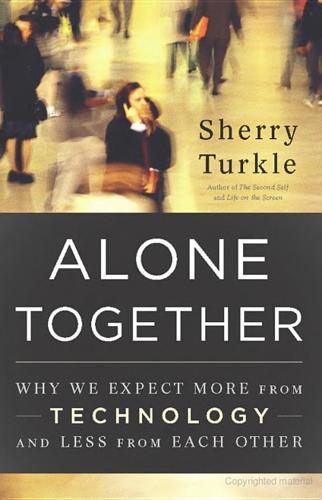
Alone Together
by
Sherry Turkle
Published 11 Jan 2011
Then, with seeming autonomy, AIBO raised its back leg to some suggestion of a hydrant. Then, it hesitated, a stroke of invention in itself, and lowered its head as though in shame. The audience gasped. The gesture, designed to play to the crowd, was wildly successful. I imagined how audiences responded to Jacques de Vaucanson’s eighteenth-century digesting (and defecating) mechanical duck and to the chess-playing automata that mesmerized Edgar Alan Poe. AIBO, like these, was applauded as a marvel, a wonder.1 Depending on how it is treated, an individual AIBO develops a distinct personality as it matures from a fall-down puppy to a grown-up dog.
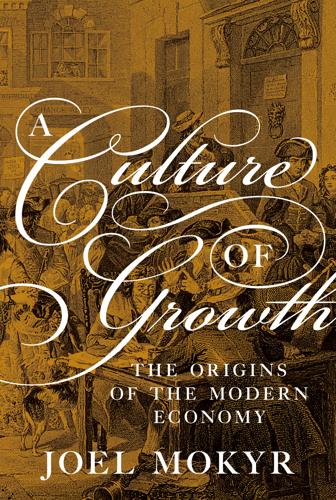
A Culture of Growth: The Origins of the Modern Economy
by
Joel Mokyr
Published 8 Jan 2016
Moreover, some of the more interesting “great inventors” of the age—starting with Newcomen and his assistant John Calley, the clockmaker John Harrison and the instrument maker James Watt—were skilled artisans themselves. Yet artisans, unless they were as unusually gifted and well educated as the brilliant inventor Jacques de Vaucanson (1709–1782) or the ingenious French armorer and inventor Edme Régnier (1751–1825), were good at making incremental improvements to existing processes, not in expanding the epistemic base of the techniques they used or applying state-of-the-art scientific knowledge to their craft. In other words, a purely artisanal knowledge society will not create a cluster of macroinventions that revolutionized production from the foundation.9 Artisans were also not well positioned to rely on the two processes of analogy and recombination, in which technology improves by adopting or imitating tricks and gimmicks from other, unrelated, activities.
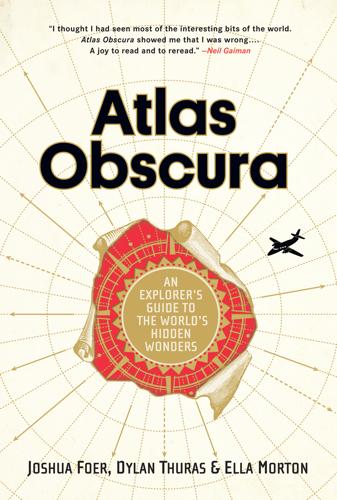
Atlas Obscura: An Explorer's Guide to the World's Hidden Wonders
by
Joshua Foer
,
Dylan Thuras
and
Ella Morton
Published 19 Sep 2016
The cabinet beneath the chess board held a squashed chess master who made every move by candlelight, pulling levers to operate the Turk’s arm and keeping track of the moves on his or her own board. The Turk was nothing but an elaborate hoax. While the Turk was frustrating its opponents, genuine automatons delighted onlookers with their realistic movements. The Digesting Duck, the 1739 creation of Jacques de Vaucanson, flapped its wings, moved its head, ate grains, and shortly afterward defecated. The digestion process was not authentic—the duck’s backside housed a reservoir of droppings that would fall in response to the amount of grains being “eaten”—but it was the first step toward what de Vaucanson hoped would eventually be a genuine eating machine.
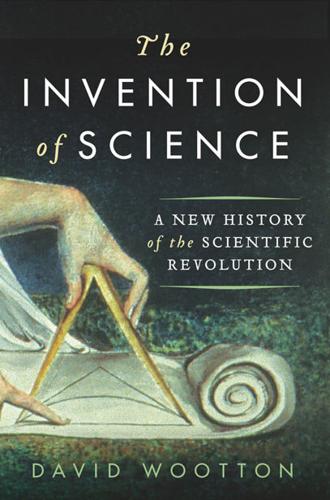
The Invention of Science: A New History of the Scientific Revolution
by
David Wootton
Published 7 Dec 2015
But, of course, once animals have been claimed to be machines, it is a small step to arguing that human beings are also machines, and so to the adoption of a systematic materialism of a sort which would have been anathema to Gassendi, Descartes, Boyle and Newton. Julien Offray de La Mettrie’s Man the Machine (1748) is a logical development of this sort of uncompromising mechanistic thinking.24 The challenge set by Descartes was, of course, that of building an automaton that could behave like an animal. A hundred years later Jacques de Vaucanson (1709–82) made a mechanical duck which could walk, quack, eat and defecate.25 Descartes does not think of the universe as being like a clock because in his view outer space is filled not with the crystal spheres of Ptolemaic astronomy, nor with the gears and levers of de Caus’s machines, but with liquid vortices which carry the planets in their orbits around the stars.26 However, he does say that understanding the universe is comparable to the problem of understanding a clock.